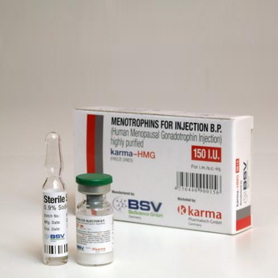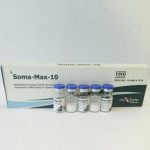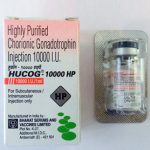Hmg 150iu Info
Growth Hormone
Growth hormone brings together two copies of its cellular receptor
Growing Children and Adults
Human growth hormone (top left), prolactin (top right), and insulin-like growth factor (bottom).
Download high quality TIFF image
As children grow, their height, weight and strength increase. Numerous factors influence this growth, including the genetic makeup of the child, nutrition and environmental factors. Specific messengers released by the body also stimulate and regulate growth. Growth hormone is one key growth signal released from the pituitary, a pea-sized gland located at the base of the brain. Lack of this hormone in children can cause them to remain shorter than average, while in its excess they may grow taller than most. Growth hormone continues its work in adults, playing an important role in repair and maintenance of different tissues in the body.
Pituitary Hormones
The pituitary releases several hormones including growth hormone, prolactin and placental lactogen. These small protein hormones are similar in their sequence and structure and play crucial roles in growth, development and milk production. Two of these are shown here at the top: human growth hormone (PDB entry 1hgu ) on the left and prolactin (PDB entry 1n9d ) on the right. Despite their similarity, these hormones have small differences in the overall shape and surface features, allowing them to bind to specific targets to perform their own functions.
Promoting Growth
Growth hormone travels through the blood and stimulates the liver to produce a protein called insulin-like growth factor (IGF-1), shown at the bottom here using coordinates in PDB entry 1h02 . IGF-1 helps the cartilage cells located at the ends of long bones to multiply. In children, this leads to growth in the length of the bones and increases the child’s height. By puberty, however, the cartilage at the ends of most long bones is converted to bone and subsequent action of growth hormone or IGF-1 usually cannot increase their length. IGF-1 also acts on immature muscle cells to increase muscle mass. Aside from these growth stimulating functions, growth hormone participates in regulating the body’s metabolism. It acts on fat cells to reduce the amount of stored fats, promotes protein synthesis in cells and plays a role in regulating the sugar levels in the blood. Thus growth hormone has multiple effects on the overall form and function of a growing body.
Growth Hormone Supplements
Growth hormone was identified in the 1920s as a growth promoting factor. By mid to late 1980s scientists were able to produce this 191-residue protein hormone in bacteria using recombinant DNA technology. With the availability of large quantities of this recombinant hormone, therapeutic uses of growth hormone became possible. Children and adults with growth hormone deficiency can now be treated with growth hormone supplements. Also, patients suffering from diseases that lead to muscle wasting and weakness (like AIDS) also benefit from such supplements. However, in some cases these supplements are exploited to reverse symptoms of aging, to increase muscle mass in athletes and to increase the height of growing children. In the food industry, the cow and pig versions of this recombinant hormone protein are used to accelerate growth in farm animals. Although some concerns have been expressed regarding possible effects of consuming meat and milk from these animals, studies show that the growth hormone from these animals does not act on humans.



















